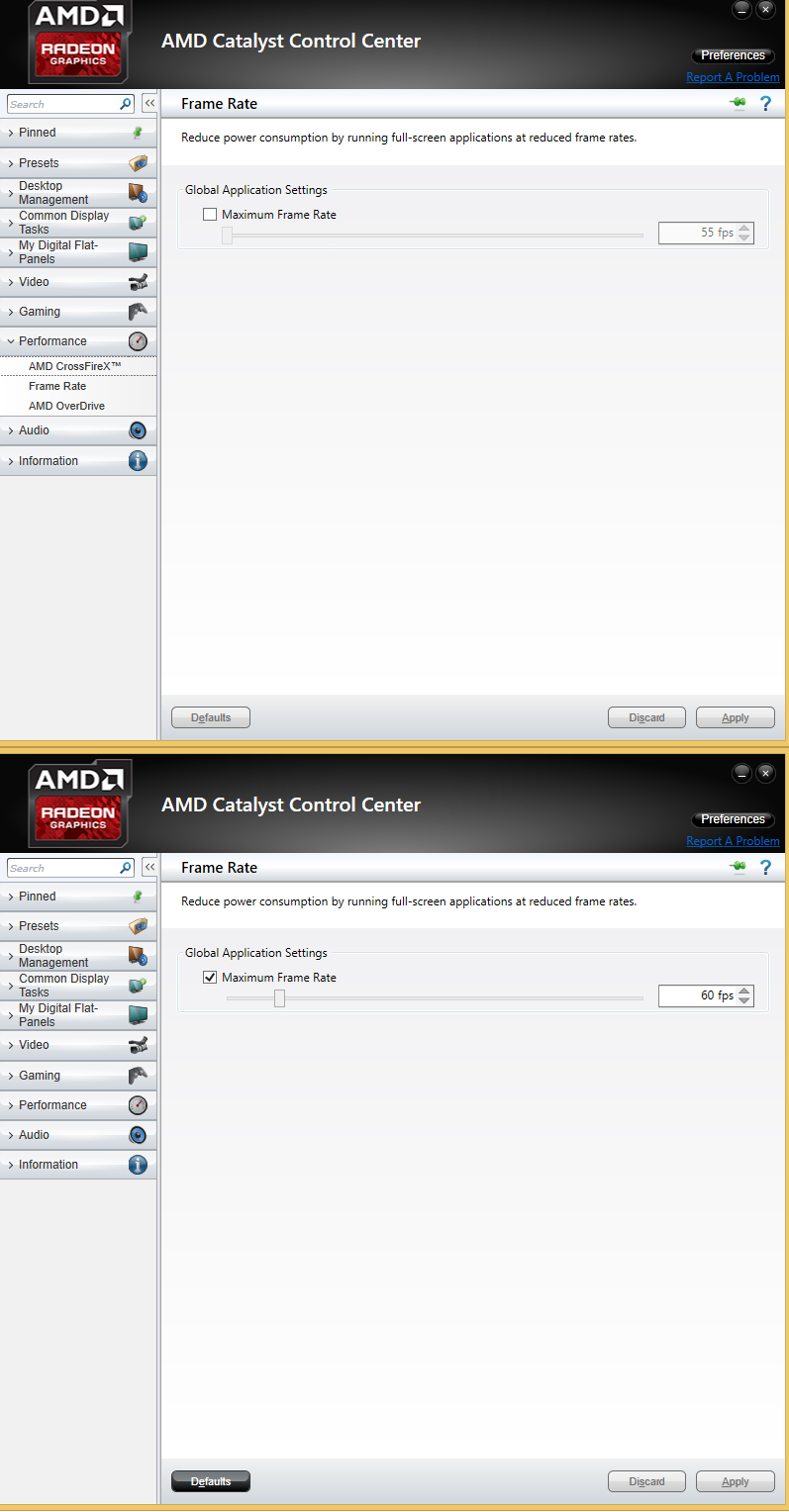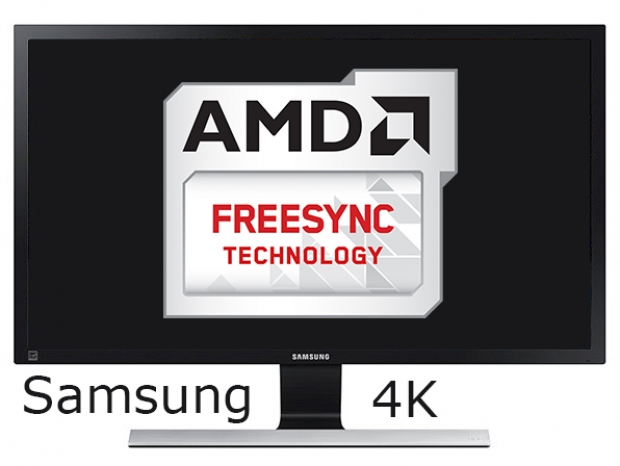Index
Frame Rate Target Control
Framerate target control (FRTC) is a recently introduced feature for AMD graphics cards. We will explain it by using one simple example.
Let's say your game runs at 100 frames per second (fps). With a framerate target set at 60fps, the GPU will scale its frequency to what is necessary to achieve 60fps. In other words, the GPU clock is modulated to achieve 60fps. Note that FRTC will not "lock" the fps and because the workload changes dynamically you will see some variation in actual fps (e.g., you set framerate target to 60fps and in reality you probably see fps vary between 50 and 60 or so). The whole idea behind it is to reduce power consumption (since the GPU will run at lower clocks and voltages - depending on GPU model / PowerTune implementation). In many scenarios, for example when you open a game menu, the GPU renders hundreds of frames, unnecessarily.
There is an important difference between FRTC and setting V-Sync ON. With V-Sync ON, we also get 60 fps "on the screen", but the GPU is not scaling its frequency, and therefore power consumption is not reduced. With V-Sync ON, the GPU will try to render as quickly as it can (e.g., it will produce 100 fps or even more frames) but you will see only 60 fps (or whatever the max supported refresh rate of the monitor happens to be).
Since we are talking today about Samsung U24E590D monitor, the user can also enable FreeSync. With FreeSync and V-Sync enabled, the monitor refresh rate is always identical to the fps the game is outputting. Of course that is true as long as the fps is higher than the lower limit of the particular FreeSync monitors FreeSync range - in the case of Samsung U24E590D monitor this is 40Hz (or fps).
It is possible to combine all three previously mentioned options. If you enable FreeSnyc and V-Sync, the GPU is rendering frames as quickly as possible (assuming that FRTC is not enabled), and then, depending on what buffering is selected, it will display the most recent image. There are no repeated frames with this method. And actually it's similar to what GSync does when GSync + V-Sync are enabled and the fps goes above the monitor’s maximum supported refresh rate.


